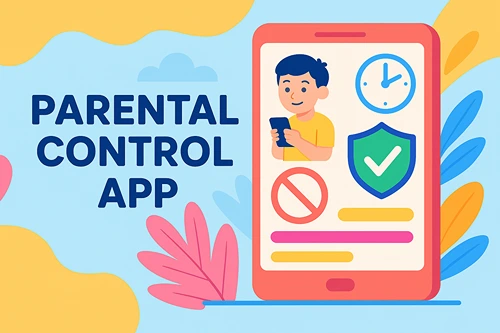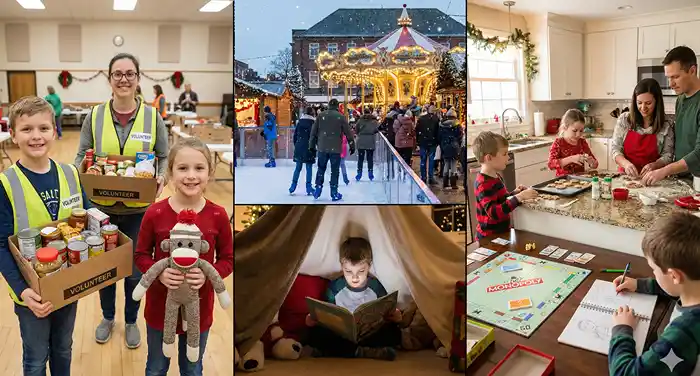Security and Safety Technologies that your Child’s School Should Have
COVID-19 is the latest in an ongoing series of events that has left most parents with unanswered questions about just how safe their children are when they’re in school. This post will outline some of the security and safety technologies that schools should adopt to help provide a sense of peace within families.
The pandemic has left caused many parents to take a closer look about the safety of their children who may be at risk. Poor security measures can make any school unsafe, but it’s important for parents to know that there are things that can be done to keep safety and security central to the daily lives of their kids in school.
There has been a lot of attention paid to EdTech tools that ensure student safety online, but we must not neglect basic safety of the physical school itself.
School Security
It’s not uncommon that parents feel like they don’t know what’s going on with their child all day. This can erode the trust between parents and their child’s teachers and administrators, making communication difficult. That’s why it’s vital that schools implement new security technologies to help build that trust back up.
One of the most important ways to do this is to improve communication, so parents can feel more at ease when they’re not around. One way schools can do this is by implementing an app where parents can see what their child is learning, when they are in school, and how they are being graded.
It might seem like a small thing, but schools can also start by implementing technologies that help secure entrances and exits in schools. For example, schools should have an access control system that requires identification in order to enter. This might sound mundane, but it goes a long way in increasing security for our kids.
Security Technology Recommendations
Both parents and children need to feel secure about their school. There shouldn’t be unanswered questions about safety throughout the public school system. The first step for schools should be to adopt security technology for kids K-12 that can help provide a sense of peace.
Security Cameras
Schools should have a security camera system that covers the entire building and grounds. This would allow the school to document all student and staff movements, and to manage data for all visitors.
Two-way Communication Systems
Additionally, schools should adopt a two-way communication system with remote, real-time video security capabilities to ensure that all security personnel can resolve security incidents quickly and at any point in time.
This system would allow the school to better understand the movement of staff and students and would also let them see what’s happening in various areas of the school at any given time.
Smart Door Locks
Schools need door locks that are quick and easy to install and use, as well as equipped with safety features. A wireless school door lock system offers remote unlock and lockdown capabilities controlled from any authorized personal device. When installing classroom and school door lock systems, it’s important to determine which type of credential and lock is best for each scenario.
For example, offices and storage closets should only be accessible by authorized staff, so a school door lock system that can be unlocked with a mobile or key card credentials is best. Similarly, science and computer labs with expensive equipment should have an access activity log in case an audit is needed.
COVID-19 has shown us that we can’t take security and safety for granted. Schools need to adopt these technologies to help instill a sense of calm in families and parents.
Playground Safety
With all the focus on keeping kids safe within the school, administrators should not neglect to think about proper measures for school playground safety, including proper exterior lighting around the school. This is especially beneficial in the winter when the sun is late to rise in the morning and early to set in the afternoon. Lighting also ensures a safe playground in the evening all year round.
Prevention is key
Parents want to know that their children are safe in school, and they should have that peace of mind. With the use of security cameras, emergency call buttons, and other safety technologies, schools can provide a sense of security that parents have been missing.
Prevention is key in any situation when it comes to improving safety. It’s a matter of implementing the right security and safety technologies in schools so that people can feel safe in their environment.
Prevention starts with the idea of security and safety technologies in schools. Schools can use a variety of technologies to protect their students. For example, a school might want to invest in security cameras for hallways and the perimeter of the building. They can also install emergency call buttons in classrooms and hallways. All these solutions would provide a sense of security for students and parents alike.
Prevention is about implementing the right security and safety technologies in schools. By doing so, we give our children a fighting chance at feeling safe and secure no matter what happens.
Emergency Protocols
Your child’s school should be a place that fosters a strong support system, along with exploration, inclusively and inquisitiveness. Schools should be a place of happiness and safety. Children should be taught about potential dangers in a calm manner so they feel empowered to do the right thing when an issue arises. An investment in the security and safety technologies is one thing, but we all need to know the things we can do to protect ourselves as well.
For example, schools already have emergency protocols in place in the event of a fire. Do you also have those safety instructions at home? Here are some tips to teach kids what they need to know so you can both feel more prepared.
Teaching-Children-Emergency-Safety-Protocals
Open PDF
This infographic was created by BlowHard Fans, where the needs, challenges, and demands of firefighters are at the core what we do.





